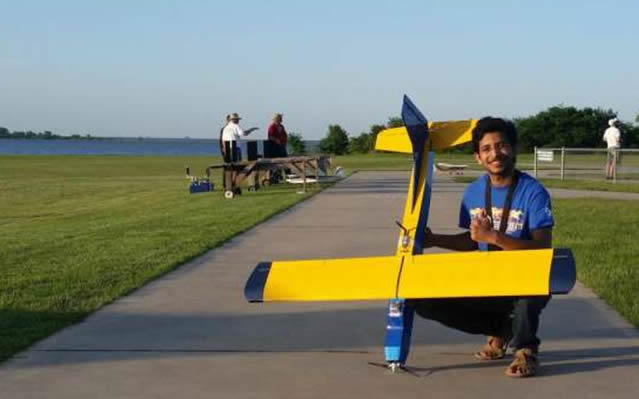
A young graduate from Texas has developed a new turning system for airplanes that has the potential to transform how aircraft are controlled, opening up a new frontier in performance and fuel saving technology.
By using weights that move back and forth within the wings to change direction, Samath Reddy Vengate of the University of Texas at Arlington, has potentially removed the need for ailerons and elevators.
Ailerons and elevators are the moveable surfaces near the trailing edges of wings and tails. These control the roll and pitch of the aircraft, allowing it to bank and change direction.
However they are also one of the chief causes of drag, slowing down aircraft and causing them to burn extra fuel.
Removing ailerons and elevators would create more streamlined aircraft, therefore making them much more fuel efficient. This not only reduces operating costs but makes them more sustainable, even increasing the potential range of aircraft because of the savings on fuel.
Speaking on the University of Texas at Arlington’s website, Sameth said:
“I had seen research where fuel was redistributed to help stabilise an aircraft, and I wondered if I could build one with mass actuators [weight controls] that would be a constant in the aircraft.”
Sameth’s discovery also has the potential to create new applications in the defence industry too. The technology could be used by stealth and hypersonic aircraft to cut down their potential to be spotted by radar, by reducing the overall surface area, and to reduce the risk of a build-up of unsafe surface temperatures that have the potential to damage aircraft during hypersonic flight.
The process of weight distribution has been widely used in aviation before, most famously by Concorde, one of the most iconic aircraft ever to have flown. Concorde would pump fuel back and forth in its fuselage when it went supersonic to compensate for its insufficient elevators. However, no-one actually saw the wider potential for this until Sameth’s recent discovery.
He first tested his theory in a computer simulator before building his own remote controlled aircraft from scratch, using laser cutters to create custom braces to hold the actuators in place.
The proto-type has had successful test-flights, becoming the first aircraft to be steered using this type of technology.
“I was excited that my idea worked, and it’s even better that no-one else has ever successfully applied this idea to an aircraft,” he said, “I’m hoping to spend my career working with UAVs and this is a great start.”
We think that, somehow, Sameth will have no shortage of offers when he takes his first steps on the career ladder!
Image Credit: UT Arlington
About us
JP Aero specialises in the manufacture and distribution of aerospace fasteners. We have been in business since 1958 and have over 35,000 lines in stock at any time. If you would like to find out more, or speak to a member of the team, please do not hesitate to contact us on +44 (0)208 504 8833
If you enjoyed this post and found it informative or useful in any way then we would really appreciate it if you shared it on your social networks. Just click on the icons below.
